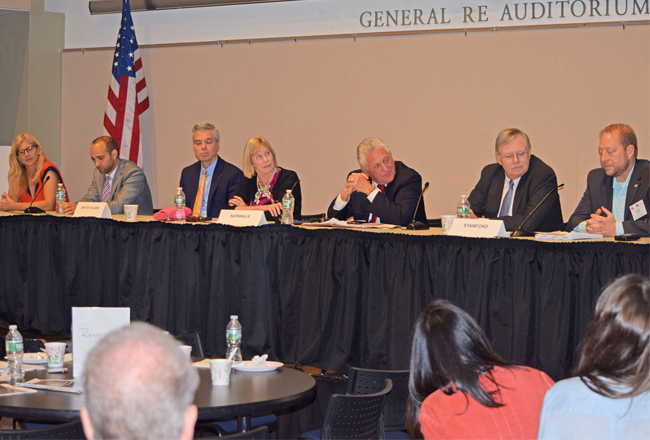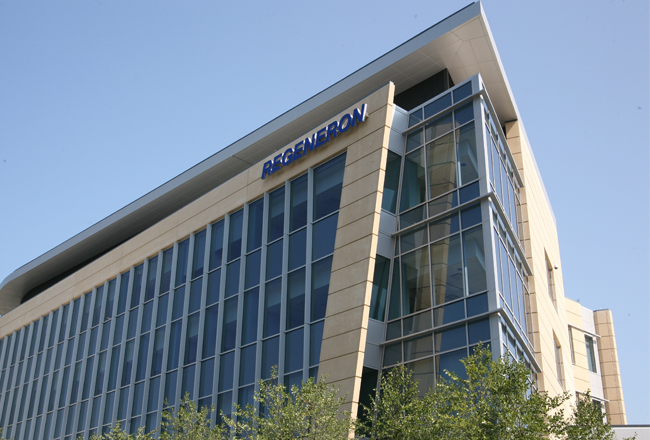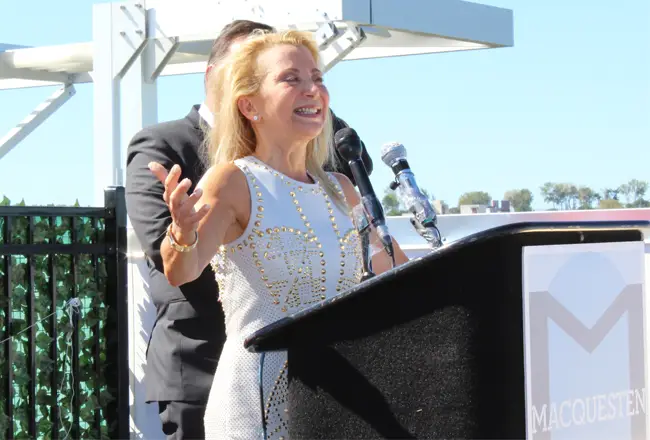Working as a team instead of in silos has long been one of the business world”™s golden rules. But can it be applied to municipalities? Participants at the recent “Mayors Perspective” forum in Stamford on strengthening the growth of Westchester and Fairfield counties certainly think so.
The annual event, presented on the University of Connecticut”™s Stamford campus by the Society for Marketing Professionals-NY Westchester Affiliate and the Construction Institute, included Norwalk Mayor Harry Rilling and Elizabeth Stocker, the city”™s economic development director; Stamford Mayor David Martin and Thomas Madden, the city”™s director of economic development; White Plains Mayor Thomas Roach and Christopher Gomez, the city”™s planning commissioner; and Yonkers Planning and Development Commissioner Wilson Kimball. Representatives for each city made a brief video or Power Point presentation highlighting some of the major construction and economic
issues they face.

Kimball noted that Yonkers is in the process of “rebuilding every one of our schools” and has applied for $2 billion in funding from the state to do so. So far, $200 million has been awarded, she said, allowing for work to begin on three schools.
Kimball also noted growing interest in Yonkers by developers, including a recent visit by a South Korean contingent and a Japanese investor, as well as from an investor in New York state looking to develop a hydroponic farm.
In White Plains, Roach said that about 4,000 new apartments “are in the pipeline” due to the city”™s fast pace of growth. Running through a list of developments, the mayor said the city plans to add a “grassy open space” near the train station ”” from which he said that equal numbers of morning commuters arrive to work in the city and depart for jobs in Manhattan ”” for concerts, picnics and the like.
As for cooperation between the municipalities, Kimball said she meets with Gomez quarterly to discuss transit-oriented development, lessons learned in developing their respective downtowns, and similar issues. “There”™s not a competition” between Yonkers and White Plains, said Kimball.
“We”™re all on the same team,” said Gomez, noting that he in talks regularly with city officials New Rochelle and Mount Vernon.
“Every city that has its act together will do well,” said Roach, the White Plains mayor. He said the population movement to suburbia, between the end of World War II and the mid-2000s, has now decidedly changed in favor of urbanization.
“People no longer want to take an hour to get to work and another hour to get back,” he said. “It”™s a different world now.” Millennials and empty nesters share many of the same interests, he added. “Neither likes to cook, they want to go out to eat and they have the disposable income to do so.”
Both Yonkers and White Plains have worked to streamline processes for developers, architects and construction companies, officials said. Kimball noted that such efficiencies are sometimes accompanied by blunt talk.
“The mayor and I met with a developer for a hotel, which I thought looked like a prison, so I told him, ”˜This will never work”™ right at the beginning,” Kimball said. Though Yonkers Mayor Mike Spano later expressed concern about her quick reaction, Kimball said the developer called the mayor later that day to express his appreciation for her honesty, which he said saved his firm time, energy and money.
Responding to a question about attracting businesses other than restaurants and bars, Roach said that, thanks to e-commerce, “experiential retail” is now the order of the day. Businesses like Legoland in Yonkers and SoulCycle offer additional activities such as book readings to gain further traction with residents, he said.
In Fairfield County, Stamford Mayor David Martin touted several major construction projects in his city, including the new Stamford Hospital, Park Square West on Washington Boulevard and the mixed-use Urban Ready Living development ”” long derided as “the hole in the ground” on Tresser Boulevard. It consists of about 670 apartments and more than 40,000 square feet of retail and commercial space. Groundbreaking on that project will take place in early October, he said.
The Stamford mayor also noted the growing footprints of city-based companies such as Charter Communications, Deloitte, and Indeed.com, as well as the recently opened Henkel headquarters.
Martin called upon “the big five” ”” Stamford, Norwalk, Greenwich, Westport, and Fairfield ”” to work together as a regional power. “We need to stop thinking about our parochial interests and start thinking about our regional interests,” he said.
In Norwalk , the city”™s population grew almost 40 percent from 2010 through 15, said Norwalk Mayor Harry Rilling. In addition to the latest Washington Village and Maritime Village developments, Rilling also enthused about Washington Street becoming “a restaurant row” with a plethora of eateries that help provide “a
vibrant nightlife.”
Rilling also touted the SoNo Collection megamall ”” “which I believe is the only mall under construction in the U.S. right now” ”” consisting of 717,000 square feet of retail space designed to house up to 100 retailers in addition to anchor tenants Nordstrom and Bloomingdale”™s. The $525 million project will employ about 2,500 full-time workers. A mall ribbon cutting is on schedule for October 2019, Rilling said.
Norwalk”™s public schools stand at 110 percent capacity, Rilling said, and will require a $130 million investment over the next five years.
Despite all the development activity, Rilling said the continued absence of a state budget remains a significant obstacle to forming future plans. Although Norwalk has amassed a rainy-day fund of just under $50 million, he said, smaller Connecticut towns are in particularly dire straits, not knowing how much in state funds they can reasonably expect to receive.
City officials on the panel also discussed making their cities more pedestrian-friendly with bicycle and foot paths. “People want to be able to walk to where they”™re going,” Roach said.
Rilling said adding bike paths has been a priority of his since being elected mayor in 2013. Norwalk has adopted an ordinance creating a permanent standing committee so that, regardless of who holds the mayor”™s office, any street improvements must include bike lanes. His ideal would be for residents, commuters and students to be able to bike all the way from Stamford or Darien to Norwalk Community College, he said.



















